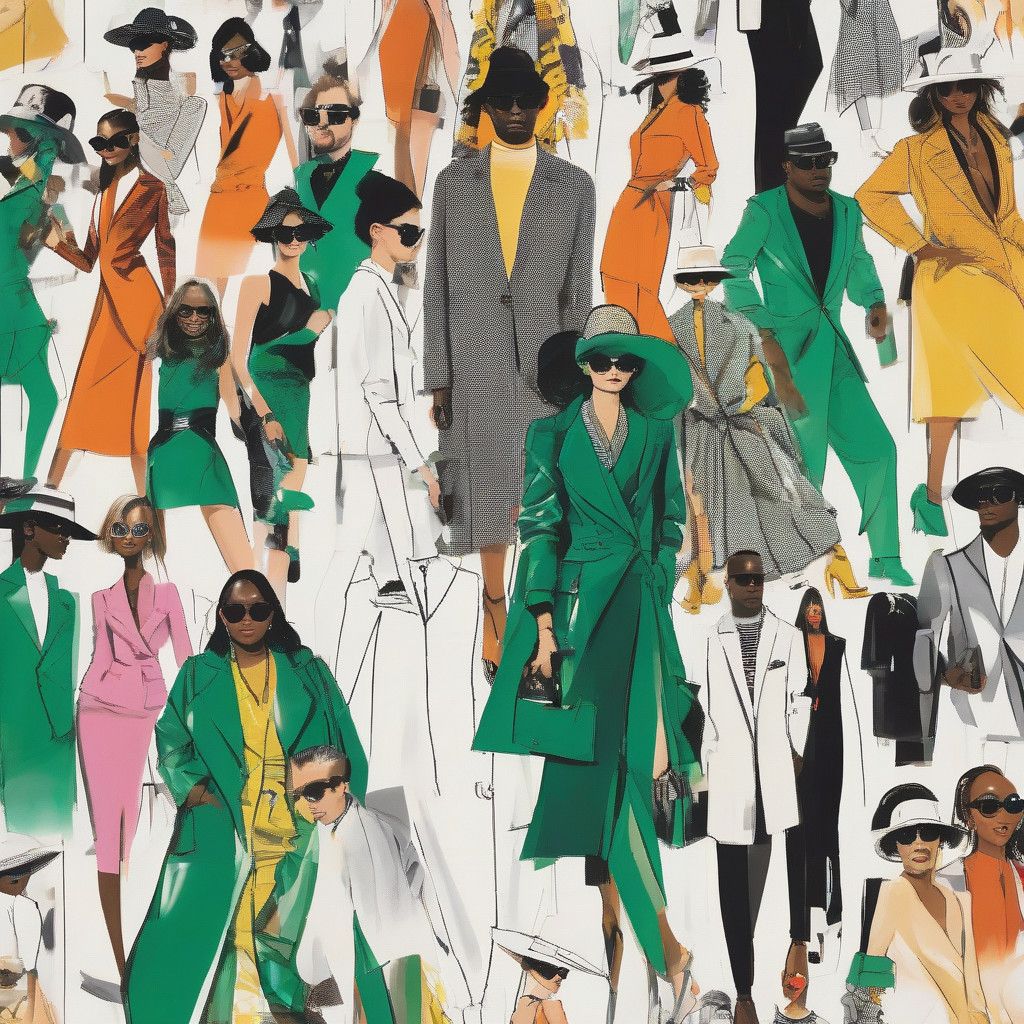NEW YORK—In the heart of the Garment District, Sergio Hudson prepares for his Spring 2025 fashion show. Surrounded by the hustle and bustle of seamstresses and tailors, Hudson feels the pressure of finalizing his collection. Amid the artistic chaos, fulfilling timely orders is crucial, but his focus is on a more pragmatic concern: sell-through rates.
As Hudson enters his eighth year in the fashion industry, he reflects on the evolution of his brand’s strategy. In the past, his shows drew heavy inspiration from the vibrant R&B culture of the 90s and early 2000s, filled with high-energy performances. This season, however, he opts for a more minimalist approach, evident in the sophisticated lines and chic silhouettes that grace the runway. With models gliding to the smooth sounds of jazz, the collection features wearable looks that are both stylish and functional.
Highlighting his keen awareness of market demand, Hudson stated, “I think I hit my stride by really paying attention to what the customer is responding to… what’s selling, what’s not selling, what we could probably be doing better.” His proactive approach not only ensures that his collections resonate with fashion insiders but also with the everyday consumer shopping at high-end retailers like Saks and Neiman Marcus.
A noteworthy addition to this season’s lineup is Hudson’s foray into menswear. With men’s fashion being more deliberate and calculated in purchasing habits, Hudson introduces coats, dress pants, and statement shirts, hoping to tap into this less spontaneous market. His versatile offerings reflect a dedicated effort to meet this demand while maintaining his brand’s identity.
Hudson’s designs have captivated high-profile figures, including Michelle Obama, who famously wore his creation for her 2020 inauguration. Yet, despite the accolades, Hudson faces significant challenges on his path to becoming a leading American sportswear brand. The stakes are high as he and co-founder Inga Beckham work tirelessly to expand their brand’s reach while navigating the complexities of the fashion industry.
Integrity and brand identity remain paramount for Hudson. While many brands express an aversion to traditional fashion weeks, he firmly believes in their importance: “I’m serious about selling clothes. My collection is gonna hit stores every season.” This dedication to retail presence not only showcases his commitment to growth but solidifies his determination in an industry that often overlooks emerging designers.
Financial Challenges and Strategic Decisions
A daunting challenge facing Hudson’s brand is the fundamental need for capital. “Simply put, we need money,” he asserts, indicating that growth is contingent upon securing investments. Hudson’s revenue surpassed $2 million last year, yet the need for supportive financial frameworks persists. He acknowledges that navigating the investment landscape with an equity focus remains difficult, especially with the representation gaps in funding for BIPOC creatives.
Beckham, Hudson’s business partner and chief financial officer, is resolute in her search for investors who understand the intricacies of the fashion business. The duo seeks financial support that values the concept and potential of their brand, rather than one that imposes unattainable expectations. Their caution is justified; recent statistics reveal that merely 0.48% of venture funding went to Black founders in the previous year, a stark reminder of the systemic challenges they encounter.
Hudson and Beckham actively cultivate relationships with buyers and carefully analyze sales reports to ensure their strategies align with market demand. They aim to capitalize on their current business model while exploring innovative approaches, such as the men’s line, to enhance profitability. As Hudson acknowledges, nurturing these essential relationships can result in more significant opportunities for securing accounts and increasing pre-orders.
Championing Diversity
As a prominent name within the fashion industry, Hudson also juggles the dual role of advocating for diversity while focusing on his own success. The industry’s diversity discourse has fluctuated over recent years, often regressing from the promises made post-2020. Hudson’s acknowledgment of this reality underscores a collective responsibility within the fashion community to sustain progress rather than revert to past norms.
Sharing his candid observations, Hudson recalls the experiences of fellow Black designers who found themselves sidelined after brief visibility. His conviction that lasting change requires continued advocacy for diversity is evident in his interactions with peers and discussions on social platforms. With increasing visibility, he strives to represent a broader narrative within the industry that champions Black-owned brands.
In closing, Hudson’s journey illustrates a blend of creativity, strategic acumen, and resilience. As he balances artistic expression with business fundamentals, he endeavors to elevate his brand while advocating for systemic change in the fashion industry. The future holds promise, contingent upon his execution of a well-calibrated strategy and effective community support. His Spring 2025 collection not only symbolizes the evolution of his vision but also serves as an essential chapter in the narrative of Black representation in fashion.
Sergio Hudson’s commitment to building a sustainable and influential brand resonates with both consumers and industry leaders alike as he continues his charge towards success.












